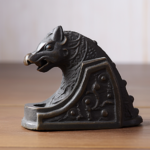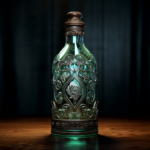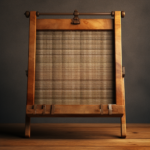Glass-cutting techniques have been around since the 17th century. Though the exact time of origin of glass cutting is not clear, it is believed that the British Isles was where the technique was refined. The cut glass patterns hold a significant place in the world of glassware and are much liked by antique collectors. This is where antique cut glass pattern identification becomes important.
How to Accurately Identify Antique Cut Glass Pattern
Antique cut glass patterns don’t just hold a timeless allure but also showcase the intricate craftsmanship and artistic brilliance of a bygone era. No wonder enthusiasts and collectors find it an exciting endeavor to identify exquisite antique cut glass patterns. In a way it connects them to the rich history of glassware.
To be able to correctly judge an antique cut glass piece it is important to learn the tips and tricks and accurately unveil a fascinating story behind each piece. Be it a family heirloom that you’ve inherited or a hidden gem you’ve stumbled upon at an estate sale, knowing key characteristics can help you identify and appreciate these elegant works of art. Here are 6 ways you can:
Understand the Basics of Cut Glass
Before delving into pattern identification, it’s essential to understand the fundamentals of cut glass. Most people confused pressed glass with cut glass. But unlike pressed glass, which is molded, cut glass patterns are created by skilled artisans who meticulously cut or engrave the glass surface. These cuts form facets that sparkle and reflect light, giving cut glass its distinctive radiance and elegance.
Examine the Quality of Glass
Why is assessing the quality of the glass crucial in identifying an antique cut glass pattern? Because, fine cut glassware typically has a heavy, crystal-clear appearance, indicating high-quality lead glass. You should look for smooth, polished edges, as well as intricate and consistent cutting lines. These indicate precision craftsmanship so you know it’s not a fake.
Identify Common Patterns
To be able to accurately carry out antique cut glass pattern identification it is essential to familiarize yourself with some of the common cut glass patterns. Study patterns that were popular during different historical periods. Some classic patterns include Brilliant Cut, Hobstar, Thistle, Strawberry Diamond, Panel Cut, and Brazilian. Understanding these fundamental patterns can serve as a starting point in your cut glass identification journey.
Analyze the Motifs and Designs
Each cut glass pattern boasts unique motifs and designs. You will have to closely look for recurring shapes such as stars, diamonds, fans, crosshatching, or flowers. Also, pay attention to the symmetry and arrangement of the cuts, while at the same time checking the intricate details that set a pattern apart from others.
Check for Manufacturer’s Marks
Most reputable glass manufacturers often marked their products with their own names or marks. These can provide valuable clues to the piece’s origin and pattern identification. To be sure it is an original, you can look for engraved or acid-etched marks on the bottom or sides of the glass. Some of the common marks include company logos, names, or numbers.
Seek Expert Opinions
If you encounter difficulty in identifying a cut glass pattern, it always makes sense to seek advice from experts. You can reach out to appraisers, collectors, or glassware forums which can be immensely helpful. It will also help you to search communities dedicated to antique glassware. Such groups are often filled with knowledgeable individuals eager to share their insights and expertise. Appraisily experts can help you too.







